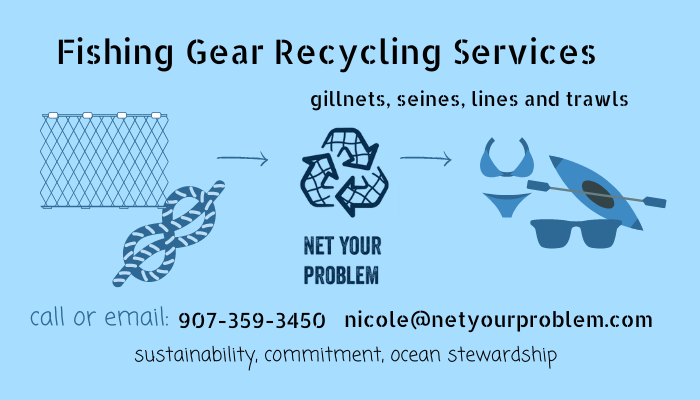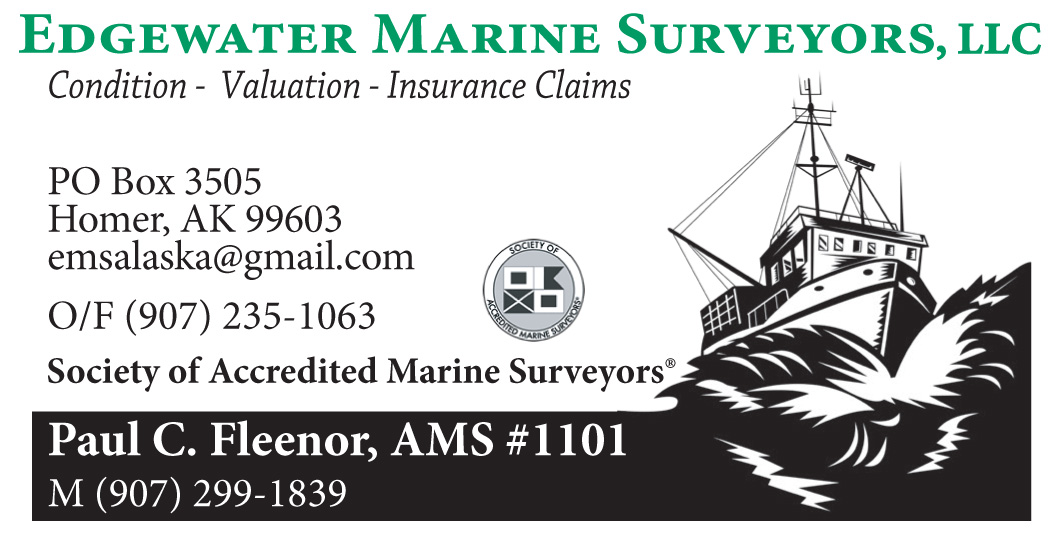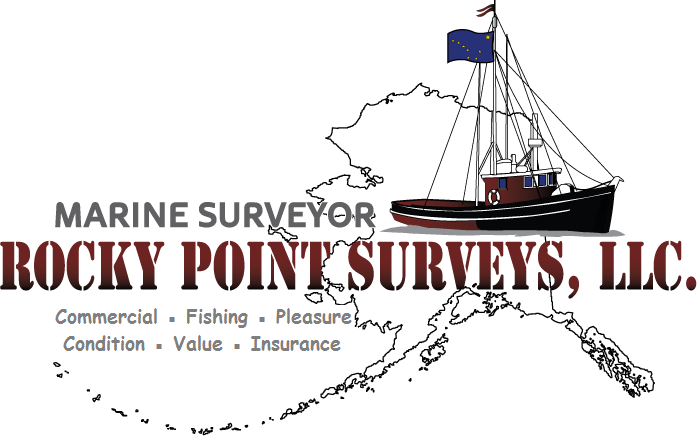Fish Factor by Laine Welch
June 11, 2021
Alaskans who are engaged in or interested in mariculture are invited to become founding members in a new group that will advance the growing industry across the state.
The newly formed Alaska Mariculture Alliance (AMA) is a private non-profit successor to a five-year task force formed in 2016 by Governor Walker and re-authorized in 2018 by Governor Dunleavy. The task force will sunset on June 30.
“One of the priority recommendations was to create a long term entity that would coordinate and support development of a robust and sustainable mariculture industry to produce shellfish and aquatic plants for the long-term benefit of Alaska’s economy, environment and communities,” said Julie Decker, executive director of the Alaska Fisheries Development Foundation, which administrated the task force and will do so for the AMA.
Decker clarified that Alaska mariculture encompasses farming of shellfish and aquatic plants and also includes enhancement and restoration projects.
There are 76 active aquatic farm and nursery permits in Alaska that when combined with 35 pending new applications, comprise 1631.32 acres, according to the Alaska Dept. of Fish and Game. Some growers also are interested in sea cucumbers, geoduck clams and abalone.
Twenty-eight growers are making sales so far which in 2020 dropped to $1.08 million, down from $1.5 million, with Pacific oysters making up about 80% of the value. Sales of ribbon and sugar kelp doubled, topping 230,000 pounds valued at nearly $200,000, a nice jump from $60,000 in 2019.
“Seaweed is a newer industry even for the U.S. so there's still a lot to learn,” Decker said. “One of the big challenges is we really need people and companies to jump into seaweed processing. That's the real bottleneck right now - for the number of people who are interested in farming we need more companies doing the processing.”
Besides its wide usage in foods, pharmaceuticals, cosmetics, fertilizers and industrial products, seaweeds also benefit the planet, said Sam Rabung, director of ADF&G’s commercial fisheries division who has more than 35 years of experience in mariculture.
“We’re dealing with ocean acidification and one of the main things that drives seaweed or kelp growth is extracting carbon from the water. It can have what they call a halo effect with lower acidic levels in areas that have high levels of seaweed growth. That benefits everything,” he said.
The newly forming Alliance has a good foundation, Decker added, but there’s still a lot of work to be done.
“It’s exciting to be in on the ground floor of something new. It can also be frustrating because there's no written book and in some cases, we’re learning as we go. But we have our eyes wide open and it’s an exciting time for Alaska mariculture. So, if you care about this and want to have an impact, it’s important to get a seat at the table” she said.
Ultimately, the goal is to grow a $100 million industry by 2038. Decker said some believe that value is conservative due to increasing demand for shellfish and sea plants.
“It's a matter of putting the pieces in place and everybody rowing in the same direction. That means the state administration, the legislature, the industry and even the public. You must have public support for being able to use public lands on public waters. And so far, we have that for the most part,” Decker said.
Alaska shellfish/seaweed harvesters, processors, nursery or hatchery operators, tribes, community development groups, researchers and cities/boroughs are invited to become full founding AMA members at $75. The dues for associate members, including businesses or non-profits, is $50.
Applications are due by June 23. Send to [email protected] or Alaska Mariculture Task Force, P.O. Box 2223, Wrangell, AK 99929.
Ranking seafood instructs voting - Alaskans opted in 2020 for ranked-choice voting as the way to elect candidates starting next year. Voters will get one ballot and rank several candidates for a given office by their preference; the one getting the majority of votes wins.
State election officials are using Alaska seafood to test out the new voting method in a mock online primary. Voters can select from 18 choices –so far, Alaska pollock, scallops, king crab and halibut are leading the pack.
“At the close of polls at 5 p.m. on June 15, we will tally the top four, and then we will create a general ranked-choice voting election,” Gail Fenumiai, election division director, told Alaska Public Media’s Liz Ruskin.
As in a real election, if no seafood wins a majority of votes in round one, the last place finisher is eliminated and those votes are given to the remaining three until one seafood favorite gets a majority.
“People will be able to see how that works, what the ballot is going to look like, and familiarize themselves with what to expect when they go to the polls And they’ll be able to see how the various rounds of tabulation work,” Fenumiai said.
Although the seafood mock election is online, voters in next August’s primary will cast ballots in normal ways – in person, or absentee by mail or fax.
“In the primary, you’re still going to get one ballot, there will no longer be multiple ballots to pick from, and you will still be selecting one choice for each race that appears on your ballot,” she explained.
Salmon slump - Salmon catches throughout the North Pacific dropped last year to the lowest levels in nearly four decades.
That’s according to the North Pacific Anadromous Fish Commission (NPAFC) which each year tracks salmon abundances and catches as reported by its five member countries - Canada, Japan, Korea, Russia, and the U.S. The Commission also coordinates research and enforcement.
Based on 2020 commercial catches, Pacific salmon abundance at 322.5 million fish was the lowest since 1982 and compares to a total take that topped 563 million fish in 2019, and 651 million salmon in 2018.
Russia took 48% of the salmon catch last year, followed by the U.S. at 41% with all but about 5 thousand tons of that coming from Alaska. Just 10% of the 2020 salmon catch was taken by Japan followed by Canada at 1% and less by Korea.
Pink salmon comprised 46% of the five nations’ catches by weight, followed by chums at 27% and sockeye salmon at 23%. Cohos comprised 3% of the harvest, with Chinook salmon at less than 1%.
The total 2020 North American salmon catch of nearly 556 million pounds was the lowest since 1977. The sockeye catch of just over 236 million pounds compares to a five-year average of 294 million pounds. For chums, a catch of 67.3 million pounds was a drop from nearly 223 million pounds taken in 2017.
The total combined salmon catch for Washington, Oregon, and California of 9.9 million pounds in 2020 was the lowest in the Commission’s data base.
For salmon that got their start in hatcheries, total releases by the five nations at about 5 billion fish have been stable since 1993.
The U.S. led with 39% of total releases; 31% were from Japan, followed by Russia at 25%, 4% from Canada and less than 1% were released from Korea.
Of the combined hatchery releases 65% were chum salmon and 25% were pinks, followed by Chinook and sockeye releases at 4%.
Eat more fish! Americans are eating more seafood and it’s a trend that shows no sign of slowing. The latest data compiled by the National Fisheries Institute from the “Fisheries of the United States” report shows that Americans ate 19.2 pounds of seafood on average in 2019, an increase of two-tenths of a pound over 2018.
Shrimp remained as the top favorite with Americans eating 4.7 pounds per capita. Salmon held on to the second spot at 3.1 pounds, up more than a half-pound. Canned tuna ranked number 3, with Alaska pollock and tilapia in the top five. Rounding out the top 10 were cod, catfish, crab, Pangasius and clams.
The numbers will certainly be much higher when seafood consumption in 2020 is measured, as Americans opted for fish and shellfish in droves during the Covid pandemic due to its proven health benefits.
And where in the world do they eat the most seafood? At the Maldives in the Indian Ocean where people consumed nearly 366 pounds per capita. The landlocked countries of Afghanistan and Tajikistan each showed the least seafood consumption at well below a quarter of a pound.
Find more at www.alaskafishradio.com






